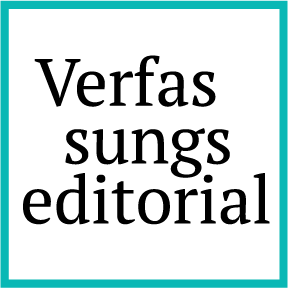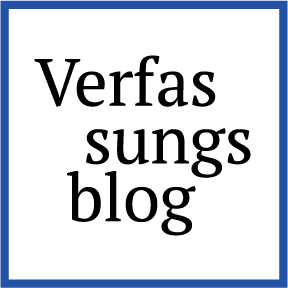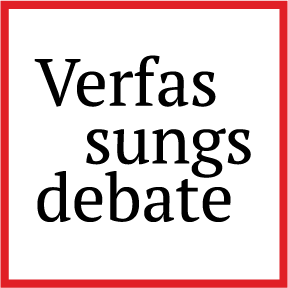Connective and Disjunctive Memory
Russian Digital Media in the 2020s
Digital memory studies assume that the content and form of individuals’, groups’ or multitudes’ memories are inseparable from the communication technologies that store and transmit them. Digital systems such as social media, instant messengers, large digital platforms and generative AI services mediate users’ knowledge of the past and shape their memory-related practices.
Our understanding of how memory has been transformed in the digital age has evolved significantly. This includes the digitization and mediation of all aspects of life; changes in the structure, hierarchy, production and consumption of mediated knowledge about the past; and the transformation of collectives and collective memory online. Digital memory scholars highlight a shift to “connective memory”, which connects individuals to a multitudes of users as opposed to the memory of a collective. Additionally, the importance of forgetting has become an essential demand of participants in digital communication, which leads to the importance of understanding “disjunctive memory” as well. Undermining the hopes for progressing empathy and understanding in the digital age, its disruptive effects materialize in Russian digital media discourse in the 2020s – driven by both state policy and the inherent nature of online communication.
Connective memory
Connective memory, as a foundational concept in digital memory theory introduced by Andrew Hoskins (2011), refers to online memory that emerges from the spread of digital technology, the omnipresence of the digital archive and users’ interactions. It suggests that social media users experience memory as both past and present. They remember by creating individual pathways of contacts and data access and feel compelled to engage in the production and consumption of emotions and memories online. Unlike traditional, static collective memory, connective memory is continuously co-produced, shared and reshaped in real-time across digital platforms, integrating personal and public experiences. It emphasizes the interplay of human and technological agency in creating a fluid, participatory memory landscape.
Connective memory relies on multiple social and technological factors. One key factor is the creation of the digital archive – a term for the extensive repository of digitized materials relating to the past and present. The archive transcends institutional boundaries. It links institutionally-curated historical sources, group memoirs and materials from individuals, covering both professional and non-professional representations. The digital archive can be viewed as an existing body of data, a potential knowledge construct, and an ongoing process of producing and consuming information. The foundation of the archive lies in the vast, user-accessible online databases. Ideally, such an archive allows individuals to access and engage with a globally preserved memory. Although transparency, accessibility, and connectivity may not be fully achieved, the digital archive still offers growing opportunities to connect elements of digital memory.
Connectivity can also be understood as a feature of an individual digital media user’s experience. Connective memory on the internet arises through technology-mediated human interactions, searching for evidence of past events, sharing emotions and stories, and linking current events to past experiences. Further work on connective memory involves refining and contextualizing the concept. Additionally, I propose introducing the concept of “disjunctive memory” as a trend that both supplements and sometimes opposes the connective tendency in digital memory.
Disjunctive memory
Despite its potential for connectivity, digital memory is also inherently non-cohesive, fragmented and susceptible to rupture and disjunction. For example, in 2015, internet companies operating in Russia were mandated by Igor Shchegolev, an aide to President V. Putin, to ensure citizens the right to be forgotten. To comply, Yandex, a major Russian IT company specializing in internet search, limited the depth of searches on the archives of the Livejournal blog network to two months. Livejournal’s archives at the time indexed 340 million posts and 1 billion comments from 2000 to autumn 2015. The sudden restriction sparked protests as the archive was an invaluable historical and cultural resource reflecting the Russian-speaking culture of the 2000s. The right to oblivion in this case, according to commentators, was used to strengthen state control over the Internet and to protect the political elite from scrutiny.
Digital memory is de-hierarchical by its nature: it challenges traditional power structures while introducing new complexities in how memory is shaped and controlled. Digital technologies disrupt traditional, structured systems of memory production, storage, and dissemination. In pre-digital contexts, memory was often curated by authoritative institutions like universities, museums, or states, which controlled what was remembered or forgotten. In contrast, digital memory is decentralized, allowing individuals to create and access memory directly through platforms like social media whose owners have replaced traditional gatekeepers. The de-hierarchical nature of digital memory, along with the very individual drive of each user to explore the past (driven by curiosity, trauma, family history, etc.), resists the creation of a single narrative about the past. In social media, users’ digital memory is often agonistic and conflictual. By nature, memory is always someone’s memory, implicitly justifying that person’s version of the past in competition with others’ versions. Another factor is the demand to erase memory from the digital archive, known as the right to be forgotten, which is sought by individuals, groups, and institutions alike. Regardless of the general characteristics of digital memory, its connective and disjunctive tendencies become most apparent when considered in political and sociocultural contexts. To illustrate this point, I will provide some examples.
Disjunctive memory as policy
In Russia during the 2000s and 2010s, a great amount of data was digitized through the efforts of various institutions, groups of professionals, as well as volunteers. Specifically, in the wake of archival declassification in the 1990s, large databases documenting crimes of the Soviet regime were created. For example, archives of the International Memorial helped establish over a dozen digitized databases. These data served as the basis for various digital commemorative projects, such as the Open List. This comprehensive database of victims of political repression in the USSR (1917–1991) was built on a Wikipedia model and contains over 3,000,000 records.
New possibilities for digital data representation and message transmission have led to projects focused on connective “living memory”. The commemorative project Minute by Minute, funded by donations and operating on Twitter and Telegram, meticulously reconstructs the chronology of traumatic events. There is the 2004 Beslan school siege (a terrorist attack in Beslan, North Ossetia, Russia, where armed Chechen militants took over 1,100 hostages, including hundreds of children), the Chornobyl (“Chernobyl” in Russian) disaster and the 2022 Russian invasion of Ukraine. Posts are published at the precise times each event occurred, allowing users – years later – to relive the events as they happened. Such publications spark strong emotional responses and waves of personal memories on social media.
At the same time, the disjunction of online memory is becoming increasingly prominent in the current political context. The battle for control over historical memory has been central to establishing an authoritarian regime in Russia. Since the early 2000s, the Russian authorities have worked to erase memories of Soviet terror, block investigations into Stalinist crimes, like the mass shootings in Katyn and Sandarmokh, and rewrite the history of the USSR – benefiting state power and normalizing state violence. By the 2010s, the organization Memorial (comprising Memorial International and Human Rights Centre Memorial) faced mounting pressure, leading to the International Memorial’s dissolution in 2021. In the 2020s, penalties increased for challenging Kremlin-backed WWII narratives. In 2023, a new school textbook was introduced, praising Stalin, condemning the USSR’s collapse, and promoting a propagandistic view of the annexation of Crimea, the “Donbas war,” and the 2022 invasion of Ukraine. Following the full-scale war with Ukraine, an unofficial campaign in Russia has sought to dismantle memorials to repression victims, while the Prosecutor General’s Office has begun reviewing and revoking rehabilitations of Stalin-era victims. In the 2020s, state-imposed narratives on Russia, Ukraine, and Western relations have dominated the media.
Digital commemoration projects for victims of political repression face strong opposition from Russian authorities. Many digital projects and databases related to historical memory, especially on Soviet-era repression, are blocked or restricted. In October 2024, Roskomnadzor (the Russian Federal Service for Supervision of Communications, Information Technology and Mass Media) blocked the site for the annual Return of Names event honoring repression victims, and online projects covering recent political events targeted for erasure were restricted as well. Similarly, OVD-Info, which monitors political detentions, was blocked in 2021 and designated a foreign agent. The investigative journalists’ media Proekt, blocked the same year, was deemed “undesirable” due to its work on corruption and Soviet history legacies. Many platforms documenting the war in Ukraine were similarly blocked during 2022. These restrictions aim to create gaps and barriers to preserving memory and independent analysis.
In wartime, digital information battles intensify. For instance, after Russian forces withdrew from Bucha, Ukraine, on March 31, 2022, Western media published photographs of civilian bodies on the streets and in mass graves, turning Bucha into a symbol of Russian war crimes. Searches in Google for images of Bucha after that yielded images of civilian deaths, whereas searches in the Russian search engine Yandex yielded none, instead displaying Bucha as a tourist destination. This manipulation of information, access restrictions, misinformation and growing distrust among internet users amplify the disjunction of memory.
Disjunctive memory as a feature of online communication
However, fragmentation of memory does not only occur due to bans or censorship. Often, it’s an unintended result of how digital memories are produced, circulated, and consumed. Users often weaponize competing historical interpretations to justify political conflicts, debating history through the lens of their agendas. Digital memories are often polarizing, with historical discussions framed in black-and-white terms, accompanied by high emotionality and verbal aggression. Online, people seek solidarity with like-minded individuals who affirm their beliefs through shared memories, often leading to the outright rejection of memories from opposing perspectives. Despite access to vast historical records, users may deny the truth of accounts that conflict with views of their own.
For example, in 2024, Russian investigative journalist and activist in exile Elena Kostyuchenko posted on Facebook about her childhood in Yaroslavl, recalling her family’s extreme poverty in 1997, food shortages, and her feelings of shame. Her posts became part of ongoing debates within the Russian (primarily emigrant) anti-war opposition, on who bears responsibility for Russia’s democratic collapse and Putin’s rise to power, leading to the war in Ukraine.
Her posts triggered hundreds of comments, primarily from people in the anti-war opposition. Some of these commentators sharply rejected Kostyuchenko’s memories as “fabricated”, claiming that they remembered the year 1997 as relatively prosperous in Russia, and had personally experienced none of the hardships she described. For one witness to discredit another based on hardly comparable circumstances (hardship in Yaroslavl for one versus prosperity in Moscow for the other) seems illogical. This illustrates how one’s own more salient memory may overshadow the multiple, coexisting memories of others, even though all can be true. Nonetheless, such a realization was largely absent from the debate.
The mistrust of others’ memories in this discussion appears linked to the participants’ alignment with opposing factions within the Russian opposition in exile. From a single childhood memory, participants drew sweeping conclusions about who in Russian politics of the 1990s–2000s should bear responsibility for Putin’s rise to power, the failure of democracy, and, ultimately, the war in Ukraine. Those who emphasized their political differences from Elena Kostyuchenko and her supporters expressed them by rejecting her memory and accusing her of fabrication.
The hope was that social media, by making others’ experiences open and visible, might foster empathy and an understanding of differing perspectives. Yet the prevailing nature of memory debates is agonistic. Divergent memories highlight fragmentation within social groups. Social media discussions reveal that digital memory breaks down when faced with uncomfortable or conflicting accounts. Even within groups seemingly united by shared political goals, conflicting memories often lead to hostility toward those with differing recollections.
In this example, the disjunctive effects arise both from the nature of digital memory on social media and the specific political and cultural context shaping narratives of the past. The connectivity and disjunction of memory are not mutually exclusive but rather complementary trends in digital media. Understanding this fragmentation is crucial for evaluating how digital memory functions.



